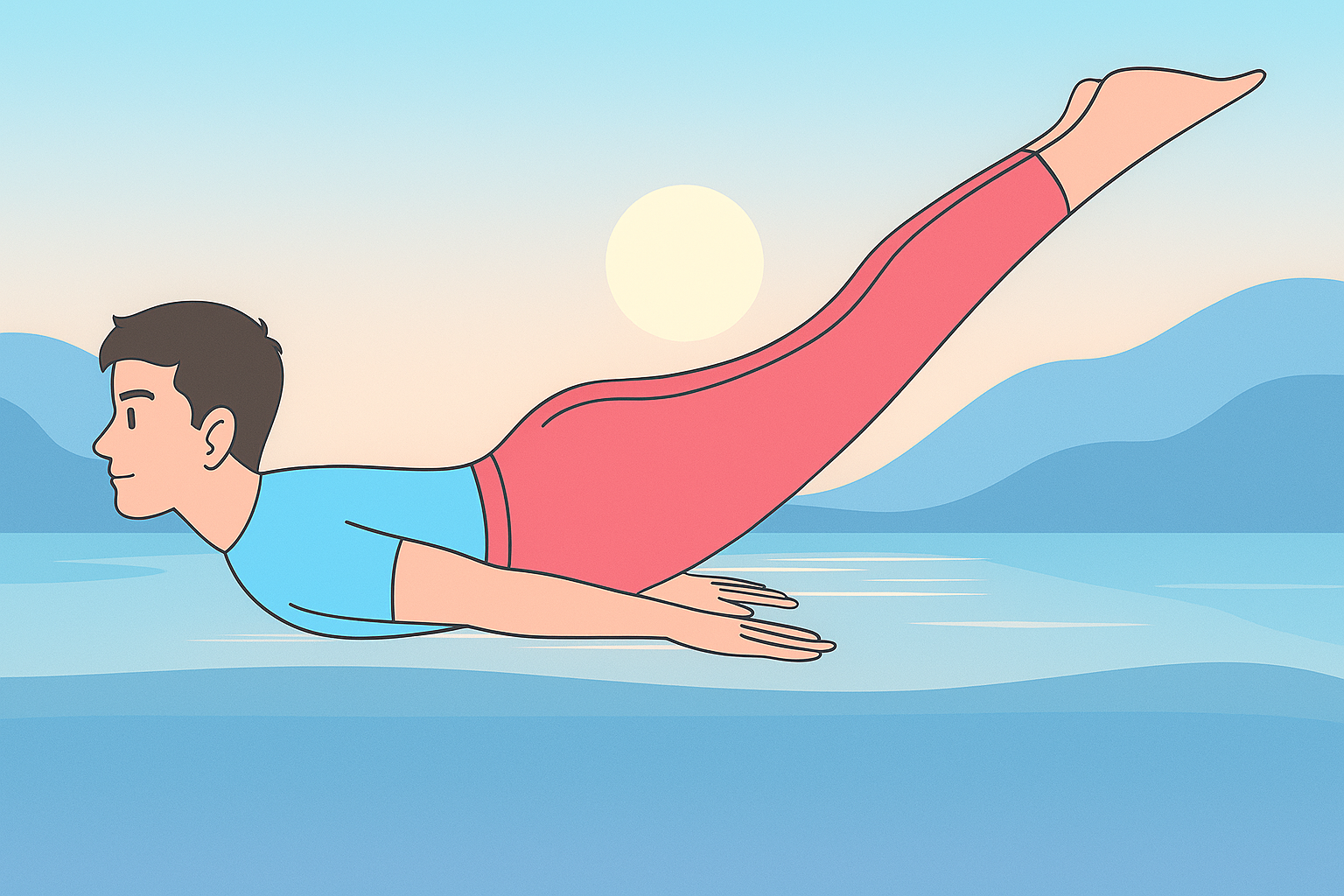Shalabhasana (Locust Pose) – Steps, Benefits, and Precautions
Yoga has been practiced in India for thousands of years as a way to keep the body healthy and the mind calm. Each yoga posture, or asana, has its own purpose and benefits. One such asana is Shalabhasana, also known as the Locust Pose. The word Shalabha in Sanskrit means locust (a type of grasshopper). In the final position of this pose, the body looks like a locust ready to spring forward, which is how it gets its name.
Table of Contents
Meaning and Importance
Shalabhasana is a posture performed while lying on the stomach. It strengthens the muscles of the back and stimulates the internal organs. It is especially good for improving posture and keeping the spine flexible. People who spend long hours sitting often feel stiffness in their lower back; this pose helps to relieve that discomfort.
Steps to Practice Shalabhasana
If you are new to yoga, it is always a good idea to learn under the guidance of a trained instructor. Follow these steps to perform Shalabhasana correctly:
- Starting Position
Lie down on your stomach (prone position) on a yoga mat. Keep your legs straight and feet together. - Positioning the Hands
Place your palms under your thighs with the hands facing downward. Press your palms gently against the floor. - Head and Chin Placement
Rest your chin on the floor so your face is looking forward. This position helps to stabilize the neck. - Lifting the Legs
While inhaling slowly, lift both legs upward as high as you can without bending the knees. Keep your legs straight and together. Do not jerk or strain while lifting. - Holding the Position
Stay in the raised position for a few seconds, breathing normally. Feel the stretch in your back, hips, and thighs. - Returning to the Ground
While exhaling, slowly lower your legs back to the floor. - Relaxation
Release your hands and relax in Makarasana (Crocodile Pose) for a short while before repeating or ending the practice.
Dos and Don’ts
Like all yoga postures, Shalabhasana should be done carefully to avoid injury. Keep these points in mind:
Do’s
- Lift your legs slowly without any sudden jerks.
- Keep your knees straight throughout the posture.
- Maintain your legs close together during the practice.
- Practice within your own physical limits.
Don’ts
- Do not bend your knees in the final position.
- Avoid this pose if you have serious back injuries, recent abdominal surgery, or are pregnant.
- Do not practice beyond your comfort level.
Benefits of Shalabhasana
Shalabhasana is more than just a stretching exercise. It works on multiple systems of the body:
- Strengthens the Back and Spine
The posture engages the muscles of the lower back, making them stronger and more flexible. This can help prevent and reduce lower back pain. - Stimulates the Nervous System
This asana activates the autonomic nervous system, particularly the parasympathetic nervous system, which helps the body relax and recover. - Improves Digestion
The gentle pressure on the abdomen during this posture massages the abdominal organs, improving digestion and relieving constipation. - Increases Blood Circulation
The upward lift of the legs encourages better circulation, directing blood flow towards the upper body. - Helps with Slip Disc Issues
Regular and careful practice can help manage mild cases of slip disc by strengthening spinal support.
Precautions
While Shalabhasana is generally safe, it is not suitable for everyone. People with the following conditions should avoid or modify the pose under guidance:
- Severe lower back pain or recent spinal injury
- Abdominal hernia or ulcers
- Pregnancy
- Heart problems or high blood pressure
Always listen to your body. If you feel pain (not just stretching), stop immediately.
Tips for Beginners
- Start by lifting one leg at a time before trying to lift both together. This makes the pose easier and builds strength gradually.
- Focus on breathing slowly and steadily. Avoid holding your breath during the pose.
- Warm up your back muscles with gentle stretches before attempting Shalabhasana.
Conclusion
Shalabhasana, or Locust Pose, is a powerful yoga posture that improves flexibility, strengthens the back, and supports better digestion. Its benefits go beyond physical fitness—it also helps calm the mind through controlled breathing and focused movement. However, it must be practiced carefully, respecting your body’s capacity. With regular practice and proper technique, Shalabhasana can become an important part of a healthy lifestyle.
Subscribe to us on YouTube and try our quizzes on this website to keep your exam preparation on track.




